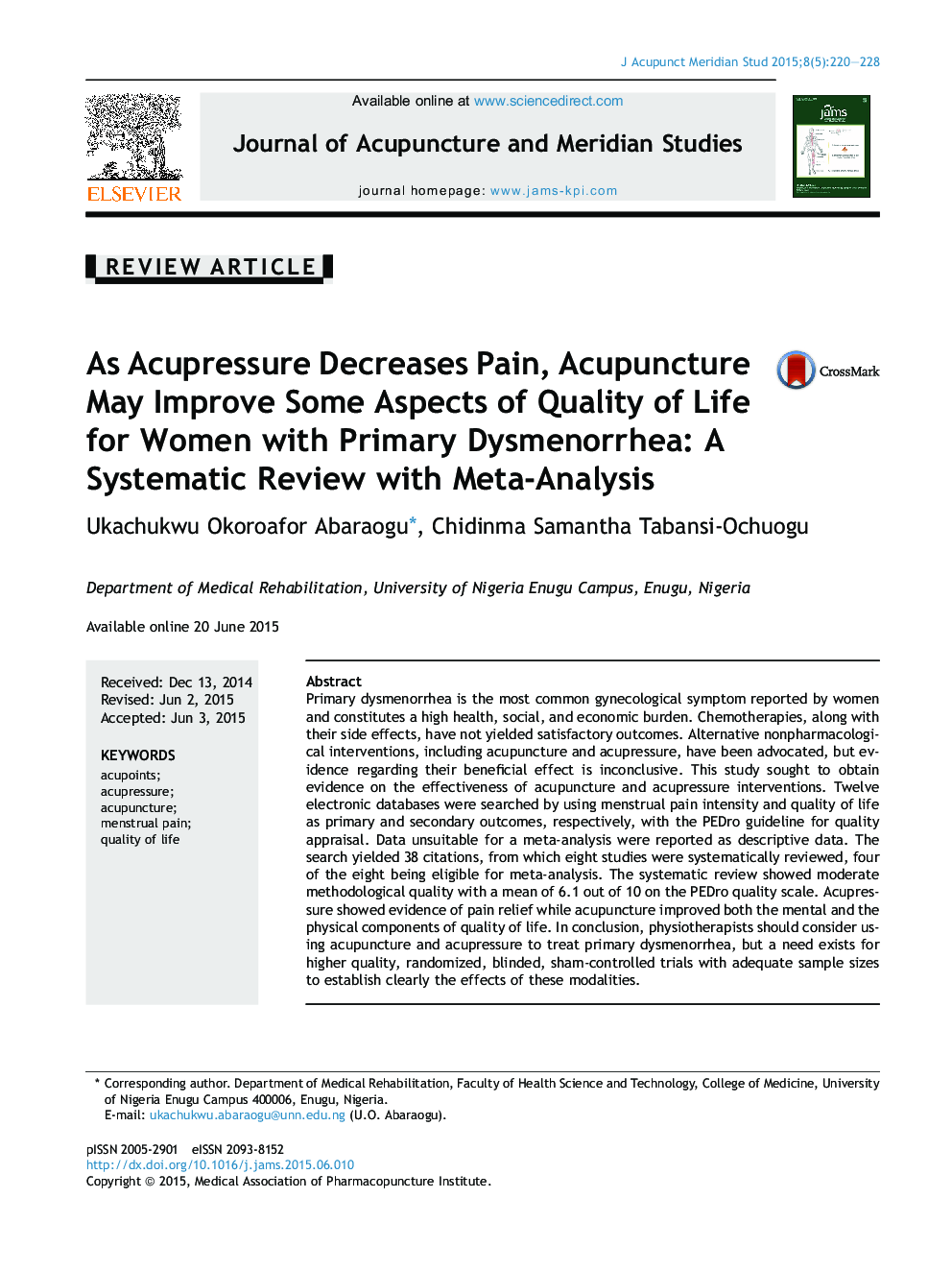| Article ID | Journal | Published Year | Pages | File Type |
|---|---|---|---|---|
| 3098650 | Journal of Acupuncture and Meridian Studies | 2015 | 9 Pages |
Primary dysmenorrhea is the most common gynecological symptom reported by women and constitutes a high health, social, and economic burden. Chemotherapies, along with their side effects, have not yielded satisfactory outcomes. Alternative nonpharmacological interventions, including acupuncture and acupressure, have been advocated, but evidence regarding their beneficial effect is inconclusive. This study sought to obtain evidence on the effectiveness of acupuncture and acupressure interventions. Twelve electronic databases were searched by using menstrual pain intensity and quality of life as primary and secondary outcomes, respectively, with the PEDro guideline for quality appraisal. Data unsuitable for a meta-analysis were reported as descriptive data. The search yielded 38 citations, from which eight studies were systematically reviewed, four of the eight being eligible for meta-analysis. The systematic review showed moderate methodological quality with a mean of 6.1 out of 10 on the PEDro quality scale. Acupressure showed evidence of pain relief while acupuncture improved both the mental and the physical components of quality of life. In conclusion, physiotherapists should consider using acupuncture and acupressure to treat primary dysmenorrhea, but a need exists for higher quality, randomized, blinded, sham-controlled trials with adequate sample sizes to establish clearly the effects of these modalities.
